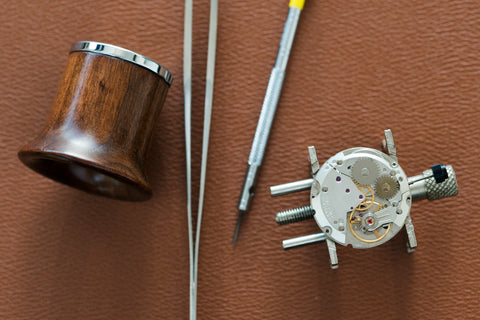Derek Pratt is a name that ought to be better known. After all, his efforts, be they helping to revive the historic Urban Jürgensen name, or in his attempts at recreating John Harrison’s H4 marine chronometer, were significant to modern watchmaking. However, his relative obscurity is perhaps due to the fact that his name seldom adorned the dials of the watches he worked on. Throughout his career, his focus predominately remained on the mechanics on the movement side, improving escapement and remontoire architecture to enhance chronometry. Moved by the works of Abraham-Louis Breguet, Pratt’s work bore the same credo ‘invenit et fecit’ – invented and made – as his spiritual guide’s.
In the last years of his life, Pratt had been working with his close collaborators Ron DeCorte and Stuart Lesemann to bring one of his most consequential advances, the Reuleaux triangle remontoire, from pocket watches to one for the wrist. In fact, Pratt was able to examine a prototype of the movement before he passed away in 2009. DeCorte and Lesemann worked with watchmaker Luca Soprana and his Atelier 7h38 to bring the project to fruition, and this resulted in the calibre DP07.
This example, one of a series of seven, resulted from a collaboration between Soprana’s Atelier 7h38 and United Arab Emirates-based Perpétuel Gallery, with the blessing of Pratt’s family.
The 41.6mm stainless-steel case features a rounded bezel and caseback rim, sandwiching a rounded midcase adorned with a brushed finish that is pleasingly tactile. The polished lugs originate from the midcase, tapering gently; in profile, they have a concave form. On the movement side, interestingly, the display caseback is screwed on to the underside of the lugs. The 20mm distance between them is furnished with a blue, alligator-grained leather strap with a signed stainless-steel pin buckle.
The blasted salmon dial has a rich texture that reveals itself under magnification. It wears a printed blue chemin de fer of minutes that tie in nicely with the scale of the offset subsidiary seconds register as well as the hue of the heat-blued hands. The hour and minute hands have a leaf-life form. However, while both terminate in sword-like ends, they are visually distinct from each other. The seconds hand is a simple pointer. In terms of furniture, the chapter of Eastern Arabic numerals is most striking, applied to all hours save the ones at 7 and 8 o’clock positions. A thin stainless-steel inner bezel, overlapping with the offset seconds register, adds another point of interest to the watch face. The name Derek Pratt is printed on the northern half of this inner portion of the dial.
The name on the dial means the real attraction is on the movement side. The calibre DP07 appears minimal, with the twin suspended mainspring barrels dominating the viewing. They produce 36 hours of reserve. Their view is unencumbered by a bridge or the baseplate. In fact, a frosted grey bridge runs along the periphery of the barrels, with a skeletonised detail to show off the keyless works. A central jewel, ensconced in a gold chaton, anchors the pinion on which hours and minutes hands are mounted. The wheels of the going train are almost entirely hidden away, chiefly to keep the focus on the balance and escape wheels as well as the Reuleaux triangle cam, one of Pratt’s most important innovations.
These are to be found on the brushed, rose-shaded baseplate that wears a media-blasted finish. The large, four-armed balance wheel has four timing screws and a Breguet terminal curve. Suspended from a stepped, rounded bridge, with a high polish finish, the balance has a frequency of 18,000 vibrations per hour.
The 15-tooth Swiss-lever escape wheel is mounted co-axially with a three-toothed escape wheel. The two are linked by a hairspring. The Swiss lever escape wheel also has atop it a Reuleaux triangle cam that is coupled with a two-pronged fork. The movement of this triangular jewel cam, through this fork, governs the rate of the three-toothed remontoire wheel, giving the watch its dead-beat trait. This remontoire also ensures that a steady rate of energy is passed through the 15-tooth Swiss level escape wheel to the balance, steadying amplitude, which of course aids chronometry. The components of this elaborate escapement are held by two stepped bridges.
On the baseplate are two plaques, one detailing the serial number, while the other reads ‘Derek Pratt Invenit’ a reference to how the watchmaker used to sign the movements that bore his labour.
This represents a faithful interpretation of Pratt’s watchmaking philosophy, wrapped in a package that is of the moment. Crucially, it is one of the few examples of the watchmaker's name on the dial.


























































































































































































































